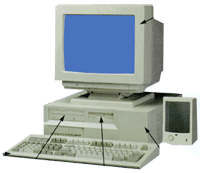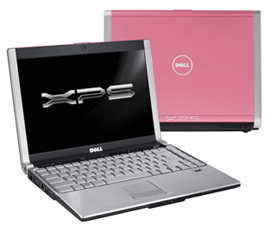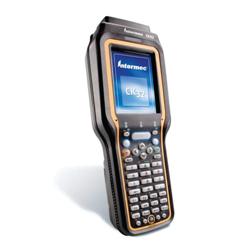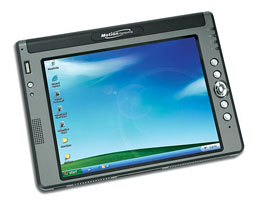The development of the modern day computer was the result of advances in technologies and man's need to quantify. Papyrus helped early man to record language and numbers. The abacus was one of the first counting machines..
Some of the earlier mechanical counting machines lacked the technology to make the design work. For instance, some had parts made of wood prior to metal manipulation and manufacturing. Imagine the wear on wooden gears. This history of computers site includes the names of early pioneers of math and computing and links to related sites about the History of Computers, for further study. This site would be a good Web adjunct to accompany any book on the History of Computers or Introduction to Computers. The "H" Section includes a link to the History of the Web Beginning at CERN which includes Bibliography and Related Links. Hitmill.com strives to always include related links for a broader educational experience. The material was originally divided into Part 1 & Part 2.
The first computers were people! That is, electronic computers (and the earlier mechanical computers) were given this name because they performed the work that had previously been assigned to people. "Computer" was originally a job title: it was used to describe those human beings (predominantly women) whose job it was to perform the repetitive calculations required to compute such things as navigational tables, tide charts, and planetary positions for astronomical almanacs. Imagine you had a job where hour after hour, day after day, you were to do nothing but compute multiplications. Boredom would quickly set in, leading to carelessness, leading to mistakes. And even on your best days you wouldn't be producing answers very fast.
A computer is one of the most brilliant inventions of mankind. Thanks to the computer technology, we were able to achieve an efficient storage and processing of data; we could rest our brains by employing computer memory capacities for storage of the information. Owing to computers, we have been able speed up daily work, carry out critical transactions and achieve accuracy and precision in work output. The computers of the earlier years were of the size of a large room and were required to consume huge amounts of electric power. However, with the advancing technology, computers have shrunk to the size of a small watch. Depending on the processing powers and sizes of computers, they have been classified under various types. Let us look at the classification of computers.
 Different types of Computers
Different types of ComputersBased on the operational principle of computers, they are categorized as analog computers and hybrid computers.
Analog Computers: These are almost extinct today. These are different from a digital computer because an analog computer can perform several mathematical operations simultaneously. It uses continuous variables for mathematical operations and utilizes mechanical or electrical energy.
Hybrid Computers: These computers are a combination of both digital and analog computers. In this type of computers, the digital segments perform process control by conversion of analog signals to digital ones.
Following are some of the other important types of computers.
Mainframe Computers: Large organizations use mainframes for highly critical applications such as bulk data processing and ERP. Most of the mainframe computers have the capacities to host multiple operating systems and operate as a number of virtual machines and can thus substitute for several small servers.
Microcomputers: A computer with a microprocessor and its central processing unit is known as a microcomputer. They do not occupy space as much as mainframes. When supplemented with a keyboard and a mouse, microcomputers can be called as personal computers. A monitor, a keyboard and other similar input output devices, computer memory in the form of RAM and a power supply unit come packaged in a microcomputer. These computers can fit on desks or tables and serve as the best choices for single-user tasks.
 Personal computercomes from a variety of forms such as desktops, laptops and personal digital assistants. Let us look at each of these types of computers.
Personal computercomes from a variety of forms such as desktops, laptops and personal digital assistants. Let us look at each of these types of computers.Desktop Computers
 Desktop computers in general are designed primarily for use at a desk. Because they are stationary during their life desktop computers are typically very powerful compared to other types of computers such as a laptop.
Desktop computers in general are designed primarily for use at a desk. Because they are stationary during their life desktop computers are typically very powerful compared to other types of computers such as a laptop.The typical desktop computer is loaded with powerful components because size isn't too much of an issue. In contrast a laptop requires components to have been shrunk tremendously for functionality, and in the computer world bigger is often better when it comes to sheer speed.
Desktop computers in the most general terms are made up of separate components including the system unit, monitor, keyboard, mouse, and speakers. The system unit is the most important piece for it contains the guts and brains of the computer system.
Laptops:Similar in operation to desktops, laptop computers are miniaturized and optimized for mobile use. Laptops run on a single battery or an external adapter that charges the computer batteries. They are enabled with an inbuilt keyboard, touch pad acting as a mouse and a liquid crystal display. Its portability and capacity to operate on battery power have served as a boon for mobile users.
Laptop Computers
 Laptop computers are lightweight mobile PCs that contain thin screens and tiny frames. They are also often called notebook computers too because of their small size.
Laptop computers are lightweight mobile PCs that contain thin screens and tiny frames. They are also often called notebook computers too because of their small size. When looking at the types of computers laptops can pretty much do what a desktop PC can, though because of its smaller nature it isn't going to be as powerful as a full fledged desktop and thus will have some limitations.
Despite a minor limitation in the processing power department, which I should mention only really hinders the crazy power user, a laptop computer effortlessly can operate on batteries allowing you to be able to literally take one anywhere. Take it to the local StarBucks, your neighbors, on vacation, or even to the beach.
On a physical level a laptop unlike a desktop combines the internal hardware components, screen, and keyboard in a single case. Fold the screen down over the keyboard when not in use, drop it in your laptop bag, and your off to your favorite destination. Try that with a desktop, we dare you!
Personal Digital Assistants (PDAs)or Handheld Computers: It is a handheld computer and popularly known as a palmtop. It has a touch screen and a memory card for storage of data. PDAs can also be effectively used as portable audio players, web browsers and smart phones. Most of them can access the Internet by means of Bluetooth or Wi-Fi communication.
The smallest types of computers are handhelds. You may also hear someone call one a personal digital assistant (PDA), or pocket computer.
Handheld computer systems are battery powered and small enough to carry pretty much anywhere you please.
Handheld Computers

The smallest types of computers are handhelds. You may also hear someone call one a personal digital assistant (PDA), or pocket computer.
Handheld computer systems are battery powered and small enough to carry pretty much anywhere you please.
Pocket computers because of their absolute tiny frame are not nearly as powerful as desktop or laptop computers, but they are powerful enough in their own right to tackle plenty of computing chores.
They are great for the business man or even the busy housewife who likes to stay highly organized. PDA's are awesome for storing addresses, your friends, family, and co workers phone numbers, scheduling appointments, and even playing the occasional bathroom break game.
Some handhelds including the IPhone have more advanced capabilities including making telephone calls, accessing the Internet, and more. Some handhelds have mini thumb touch keyboards, and others handhelds have touch screens that you use with your finger or a pen like tool called a stylus.
Minicomputers: In terms of size and processing capacity, minicomputers lie in between mainframes and microcomputers. Minicomputers are also called mid-range systems or workstations. The term began to be popularly used in the 1960s to refer to relatively smaller third generation computers. They took up the space that would be needed for a refrigerator or two and used transistor and core memory technologies. The 12-bit PDP-8 minicomputer of the Digital Equipment Corporation was the first successful minicomputer.

Supercomputers: The highly calculation-intensive tasks can be effectively performed by means of supercomputers. Quantum physics, mechanics, weather forecasting, molecular theory are best studied by means of supercomputers. Their ability of parallel processing and their well-designed memory hierarchy give the supercomputers, large transaction processing powers.

Wearable Computers: A record-setting step in the evolution of computers was the creation of wearable computers. These computers can be worn on the body and are often used in the study of behavior modeling and human health. Military and health professionals have incorporated wearable computers into their daily routine, as a part of such studies. When the users’ hands and sensory organs are engaged in other activities, wearable computers are of great help in tracking human actions. Wearable computers are consistently in operation as they do not have to be turned on and off and are constantly interacting with the user.

These were some of the different types of computers available today. Looking at the rate of the advancement in technology, we can definitely look forward to many more types of computers in the near future.
Tablet PC's

Tablet PCs are unique types of computers. Like a laptop they are mobile computers which allow you the freedom to take them with you out and about.
Like some handhelds the typical Tablet PC functions using a touch screen. On the left you will see a common tablet PC model.
The most unique feature with a tablet PC's is that you have the ability to write on one electronically using a special pen called a tablet pen. For example you can draw pictures, control the cursor, or take notes electronically on the screen using the tablet pen.
One cool feature definitely worth mentioning about tablet PC's are that they include software which has the ability to convert your handwriting into typed text. Sometimes it works great, other times it is iffy, though in a short period of time all but the sloppiest writers will have adjusted their writing style a bit to where the handwriting text recognition software works wonders.